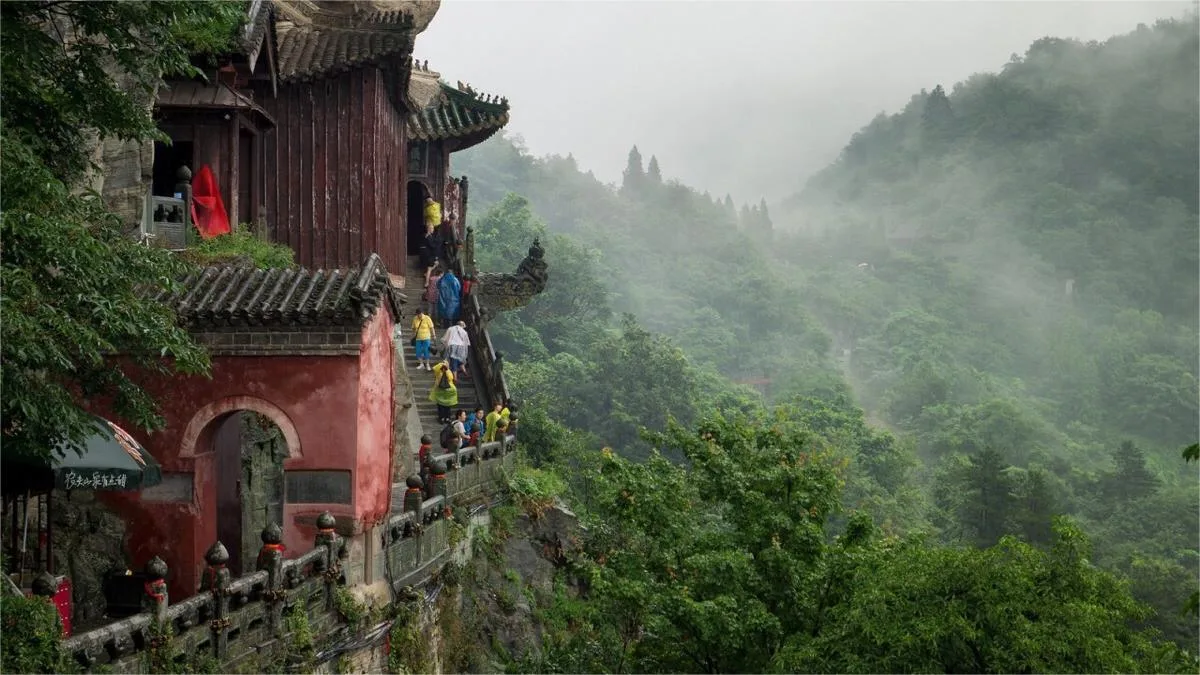Wudang Mountain, a sacred site of Taoism in China, boasts a long and profound history with rich cultural heritage. Its name first appeared in the “Book of Han,” indicating its ancient origins. From the end of the Han Dynasty to the Wei, Jin, Sui, and Tang Dynasties, Wudang Mountain became a retreat for those seeking immortality and Daoist enlightenment. Many seekers of the Dao were drawn to its mysterious atmosphere, flocking to seek truth and enlightenment. Since the Tang Dynasty, Wudang Mountain has been revered and honored by successive royal courts, gradually elevating its status and reputation.
During the Yuan Dynasty, the eminent Taoist master Zhang Liusun reported to Emperor Shizu Kublai Khan about Wudang Mountain, which greatly impressed the emperor and further consolidated the mountain’s position. In the eighth year of the Dade era (1304), Emperor Chengzong of the Yuan Dynasty conferred the title of “Blessed Land of Wudang” upon the mountain, marking a new pinnacle of its status in the religious realm.
Entering the Ming Dynasty, Wudang Mountain’s prestige reached its zenith. In the tenth year of the Yongle era (1412), Emperor Chengzu Zhu Di ordered a massive construction project on Wudang Mountain, mobilizing over 300,000 soldiers, civilians, and craftsmen for a project that lasted more than a decade. This construction effort was not only vast in scale but also intricate in design, resulting in 33 architectural complexes including 9 palaces, 8 temples, 36 hermitages, 72 cliffside temples, 39 bridges, and 12 pavilions. This grand endeavor was compared to the construction of the Forbidden City, showcasing a magnificent spectacle. In the fifteenth year of the Yongle era (1417), Wudang Mountain was conferred the title of “Grand Peak” and honored as the “Imperial Ancestral Temple,” demonstrating its esteemed status.
Moreover, Wudang Mountain is the birthplace of Wudang Martial Arts, one of the important schools of Chinese martial arts. At the end of the Yuan Dynasty and the beginning of the Ming Dynasty, Taoist Zhang Sanfeng synthesized its essence, founding the Wudang School. Characterized by the principle of softness overcoming hardness and stillness within movement, Wudang Martial Arts gained widespread popularity.
In addition to its profound cultural heritage, Wudang Mountain boasts breathtaking natural scenery. With its towering peaks, lush greenery, cascading waterfalls, and swirling mists, it is hailed as the “unsurpassed paradise throughout the ages, the foremost immortal mountain under heaven.” In recent years, the Wudang Mountain Special Zone has focused on promoting culture through tourism, continuously enhancing the Wudang cultural brand, and accelerating the development of Wudang Mountain into a world-class cultural tourism destination.


